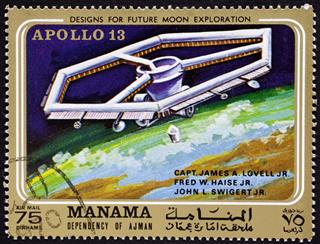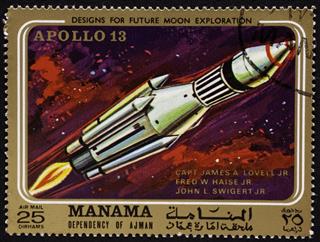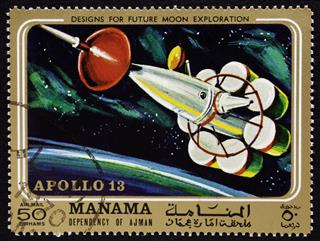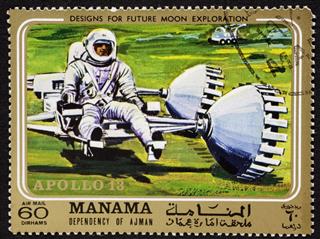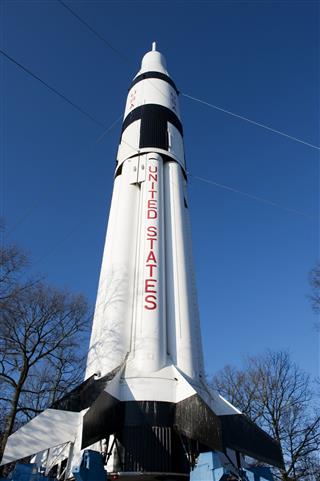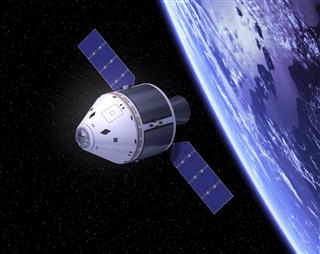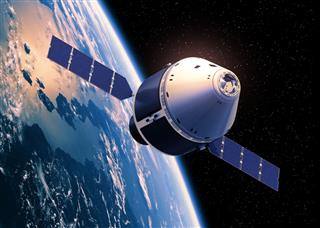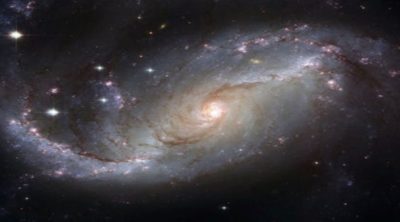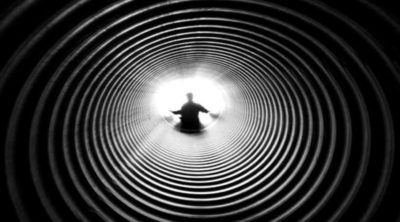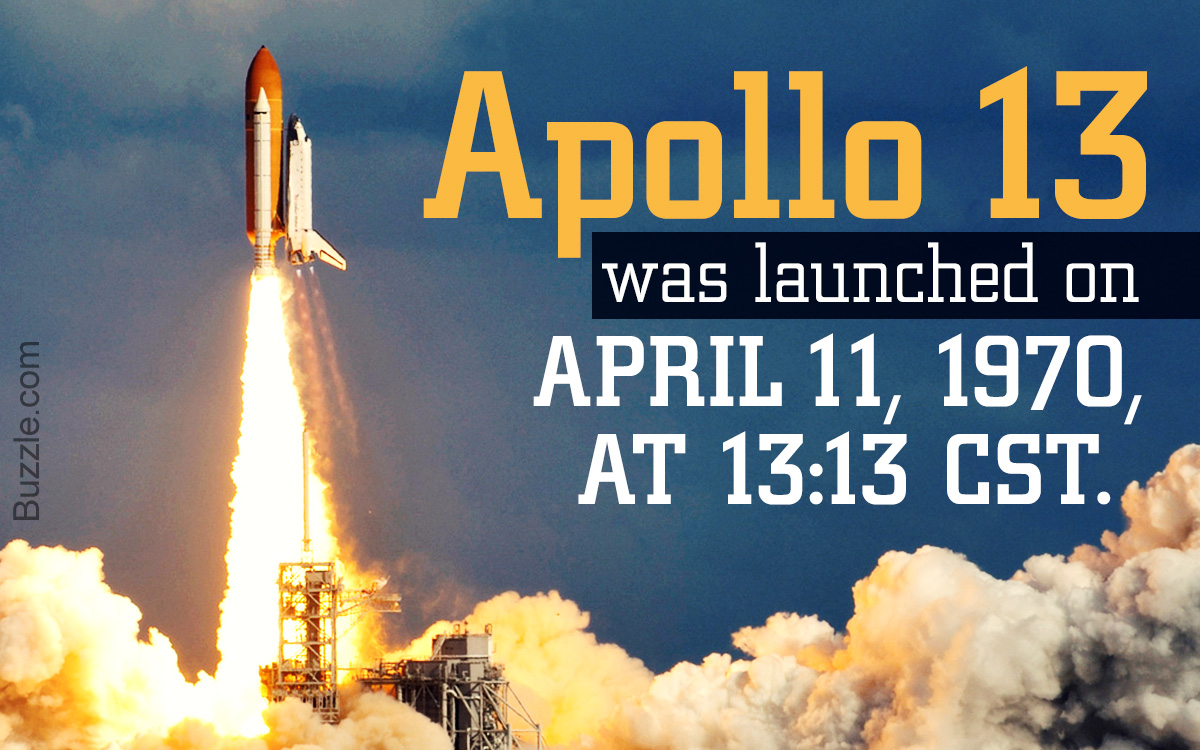
Apollo 13 was NASA’s third manned mission. Originally intended for a lunar landing, the mission succumbed to a technical malfunction that forced an abortion, mid-mission. Led by Commander James A. Lovell, the 1970 mission was termed as a ‘successful failure’.
The Apollo 13 lunar mission was launched by NASA on April 11, 1970, at CST 13:13. However, the mission was aborted two days later, due to a faulty electrical system and an explosion in one of the two service module oxygen tanks. Although the command module retained functionality, the battery power and oxygen available to the command module were enough only to be used during the final count-down. Using the lunar module as a life-boat, the crew managed to return safely to earth, in spite of limited power, decreased cabin heat and an acute shortage of water.
Crew
The Apollo 13 crew comprised:
- Commander James A. Lovell, Jr.
- Command Module Pilot John L. Swigert
- Lunar Module Pilot Fred W. Haise, Jr.
- Backup crew Commander John W. Young
- Backup crew Command Module Pilot John L. Swigert
- Backup crew Lunar Module Pilot Charles M. Duke, Jr
- Support crew members Vance D. Brand, Jack R. Lousma and Joseph P. Kerwin
- Flight directors Gene Kranz, Milt Windler, Glynn Lunney and Gerry Griffin
Apollo 13 Facts
- Facts about Apollo 13 highlight the mission parameters of the launch, with readings of CM 28,945 kg; LM 15,235 kg mass; perigee and apogee of 181.5 km and 185.6 km, respectively and an inclination of 33.5°.
- Though Ken Mattingly was originally supposed to pilot the command module, he succumbed to rubella or German measles exposure. Mattingly was replaced by John L. Swigert just 48 hours prior to the launch. Laboratory tests later revealed that Mattingly had not contracted rubella.
- NASA’s Apollo 13 mission was primarily to explore the Fra Mauro formation on the moon. This study of the widespread, hilly selenological region cost $4.4 billion. However, after the abortion of the mission, the study was then taken up by the crew aboard the Apollo 14.
- Apollo 13 was originally set on a free return trajectory. This would have enabled the crew to benefit from an automatic return to earth, without the need for engine firing. However, the desired Fra Mauro landing required the elimination of this system. Nevertheless, the crew actually performed the free return trajectory with the help of the descent propulsion system.
- Among the many limitations that the crew had to make do with, were lifeboat consumables, oxygen supply, lithium hydroxide to remove carbon dioxide and survival power level. The Apollo 13 investigation revealed that the heater and protection thermostat were changed to 65 volts from the original 28-volt DC bus, with the intention of aiding the pressurization within the tanks more rapidly. The thermostat was never upgraded to accommodate the higher voltage.
- The controls in the command module are now on display at the Cosmosphere, Kansas. The interior components were available for viewing at the Museum of Natural History and Science, Kentucky, until a decade ago. Jim Lovell’s space suit is currently on display at the Museum of Science and Industry, City of Chicago.
Apollo 13: The Accident
- The initial malfunction began during the second-stage boost. The center engine shut off 120 seconds earlier to avoid a collision with the pogo oscillations. The 16 hertz, 68g vibrations resulted in flexing the frame of thrust by 76 mm.
- The other four outboard engines were made to burn longer and this caused pressure fluctuations and eventually an engine shutdown. The crew used a helium gas reservoir to dampen the pressure oscillations, but at a distance of 321,860 kilometers from Earth, an oxygen tank exploded. The damaged insulation resulted in a fire and the tank dome failed.
- On April 13th, three days into the mission of Apollo 13, an incident occurred which altered the mission from a routine flight into a race for survival. A sharp bang and vibration indicated the loss of two of Apollo 13’s three fuel cells, which were the spacecrafts prime source of electricity were heard and experienced by the crew members. Thirteen minutes after the explosion, a crew member observed oxygen gas escaping at a high rate from the second, and last, oxygen tank.
- The crew and ground controllers knew that they would lose all oxygen, which meant that the last fuel cell would also die. With only 15 minutes of power left in the Command Module, The Mission Control told the crew to make their way into the Landing Module. Which was designed for only 45-hour lifetime, whereas it had to be stretched to 90 hrs.
- Power was thought to be of a concern as there would be insufficient power to return the ship to Earth. Water was the main consumable concern and so was removal of carbon dioxide. Besides the lack of food and water, the trip was marked by lack of sleep because of the cold. In order to conserve batteries the electrical systems were turned off, subsequently the spacecraft lost and important source of heat and the temperature dropped to 38 degrees Fahrenheit leading to condensation on all the walls.
- On re-entry to the earth, everybody at Mission Control feared for the heat shields and hence the crew were advised to retain them. Four hours before landing the crew let go of the service module and three hours later the crew splashed down gently in the Pacific Ocean near Samoa.
Apollo 13 may have been one of the most carefully watched mission of the entire space program, in spite of the fact that the mission was aborted. For four days, right from the first news of the accident through to the final tense moments of the reentry blackout, people across the nation and from all over the world, followed the story in their papers, on radio and television. Everyone waited and watched with bated breath to see if the crew would make it back home safely. It was a testament to the hard training and practice of the astronauts that they got their crippled spacecraft home, completely unaware of the attention being given to their situation.
